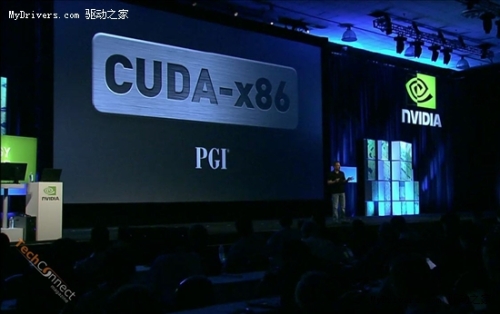
The famous market research organization John Peddie Research recently wrote an article, analyzed and commented on NVIDIA's recently announced CUDA-x86 compiler, and discussed the relationship between CUDA and x86 technology, especially why NVIDIA did it.
In fact, things did not seem so simple. The CUDA-x86 compiler announced by NVIDIA last week at the GTC 2010 Graphics Technology Conference has nothing to do with acquiring x86 intellectual property. Although this statement has never stopped in the past this year. In fact, this so-called CUDA-x86 cross-platform compiler is only used to run CUDA-written applications on x86 architecture hardware.
At first glance, this seems to contradict NVIDIA's long-term strategy. NVIDIA has been working hard to transfer applications from x86 CPUs to GPUs. Why then is it necessary to migrate their own hardware-specific CUDA programs to x86 platforms?
In fact, NVIDIA is not trying to help CUDA developers but has new goals.
NVIDIA officials stated that the purpose of the CUDA-x86 compiler is to reduce the difficulty of getting developers into CUDA. Now that most of the computing infrastructure is based on x86 processors, it wouldn't be easy to move to GPU parallel computing all at once. CUDA-x86 builds such a bridge between the two. By helping programmers develop, debug and run CUDA programs on the x86 platform first, or provide a second auxiliary platform, more and more people may be interested in GPU CUDA and devote more resources to it.
With more developers working on GPU computing, NVIDIA will only allow CUDA programs to work properly on x86 platforms. There is no need to specifically optimize them. For example, Intel Sandy Bridge and AMD Bulldozer new architecture processors will support the SIMD AVX instruction set with double floating-point performance, which can greatly improve program performance, but NVIDIA does not need to support it - certainly not to say that NVIDIA will certainly not support it. , just saying that doing so would violate its original intention.
Ultimately, CUDA-x86 programs will be slower than those that do not support CUDA but are optimized for x86 architectures, and may even be much slower. Developers will see a clear gap when running CUDA programs on x86 CPUs and NVIDIA GPUs respectively. This speedup justified NVIDIA's point: GPUs are much faster than CPUs in floating-point-intensive applications.
So, to go to the GPU you can see a ten-fold or even a hundred-fold increase in performance. This will not only make more and more developers favor NVIDIA hardware, but also help NVIDIA's GPU computing advantage market promotion. This is the true intention of the so-called CUDA-x86 compiler.
20V Desk-top power supply were widely used in digital, LED lighting, stage lighting, security, video game player and other products, is the most widely used in the electronics industry. Normally, there are 3 different kinds of AC sockets for a Desktop Power Adapter – they are C6 AC socket, C8 AC socket and C14 AC socket. All our AC/DC power adapters were get through 100% full-load burning test for at least 2 hours, and 3000Vac withstanding voltage test for 1 minutes. The conversion rate of our desktop power supplies is 85%, which is much higher than other factories.
20V Desktop Switching Power Supply
20V Desktop Switching Power Supply,20V Switching Power Supply,20V Power Supply
Shenzhen Juyuanhai Electronic Co., Ltd. , http://www.powersupplycn.com